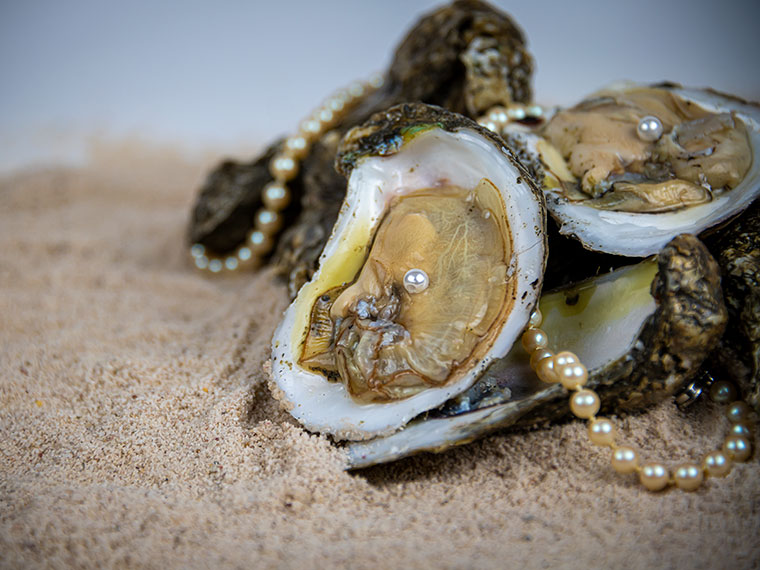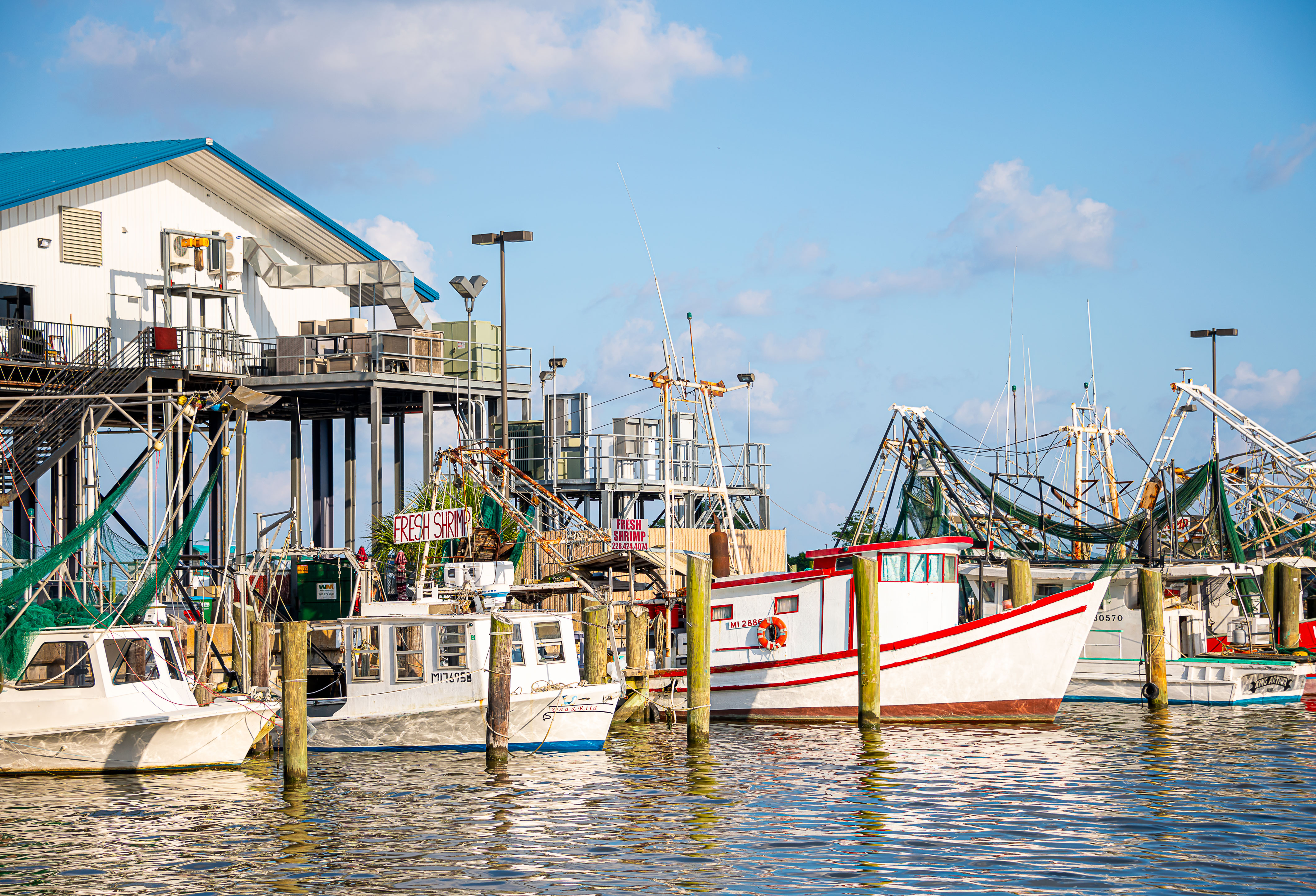The information presented on this page may be dated. It may refer to situations which have changed or people who are no longer affiliated with the university. It is archived as part of Mississippi State University's history.
Not every species of oyster produces a pearl. But to states that produce the in-demand Eastern Oyster—historically found along eastern North America from the Gulf of St. Lawrence in Canada to the Gulf of Mexico—these delicacies are equally precious. Today, they're also increasingly rare, due to recurrent influxes of freshwater and nutrients that disrupt the delicate balance of salinity, oxygen, and pH (acidity) in their estuarine homes.
Is it possible to put a price tag on the culinary and cultural value of these oysters, which require significant and repeated restoration efforts? Drs. Daniel Petrolia and Seong Yun, agricultural economists and Mississippi Agricultural and Forestry Experiment Station (MAFES) scientists, set out to determine whether Gulf state residents would put their money where their mouth is.
Their economic study contributes to a $2.8 million, multi-institutional project funded by the National Oceanic and Atmospheric Administration (NOAA) to analyze the ecological challenges of Alabama's Mobile Bay (and Northern Gulf of Mexico in general) and propose management solutions to improve the resilience of its oysters, as well as blue crab and spotted seatrout populations. The MSU team is working in tandem with scientists at the University of South Alabama, Dauphin Island Sea Lab, Auburn University, and North Carolina State University, who are focused on the ecological aspects of the study—Mobile Bay water quality studies and simulations to predict future climate scenarios in the bay area. Together, they will propose management recommendations to stakeholders in Mobile Bay seafood-related industries.
"For the last 20 to 30 years, land-grant universities have been measuring water quality issues in the Gulf of Mexico, including harmful algal bloom and hypoxic levels, to produce an annual water quality map," said Yun. "Mobile species like blue crab can migrate to safer waters, but other species, most notably oysters, are grown and harvested closer to the coast and experience greater dissolved oxygen-induced mortalities."
A representative water quality stressor, hypoxia, occurs in aquatic environments where oxygen concentrations are low enough (less than 2-3 mg/L) to have harmful physiological impacts on marine life that ripple through the food chain. Sometimes referred to as "dead zones," these areas result from freshwater runoff polluted by excess agricultural nutrients, which travel through major watersheds into warm Gulf waters—a recipe for feeding algae blooms that consume oxygen and deprive local marine life of this essential element. In 2017, NOAA measured the historically largest dead zone in the Gulf of Mexico—about the size of New Jersey.
Petrolia and Yun are approaching the problem from an economic angle, examining statewide and regional impacts of commercially and recreationally harvested species—oysters, blue crab, and spotted seatrout—as they face challenges across the entire Gulf Coast, and gauging public opinion on the value of these commodities.
A considerable aspect of the economists' work focuses on oysters, which are considered a keystone species because they play an outsized role in supporting their ecosystems. Numerous projects, including building reefs with cultch, or recycled oyster shells, creating living shorelines to recruit oysters, and seed and hatchery production, have been funded—to the tune of over $300 million—across the U.S. in the 14 years since the Deepwater Horizon disaster.
"Stakeholders want estimates of the value of these species, which share the same near-shore habitats, and one way to assess value is to find out what people are willing to pay to protect and restore them," said Petrolia.
In October 2022, Yun and Petrolia, graduate student Freedom Enyetornye, and post-doc Zhenshan Chen, distributed their focus group-tested contingent-valuation survey to a sample of 4,690 households across all five Gulf states. Consisting of two brief informational videos with questions following each, the survey assessed respondents' understanding of the issues surrounding oyster ecosystems, their willingness to pay for restoration projects, and the drivers behind their preferences.
"The results didn't surprise us, but they did confirm what we suspected—that households with vested interests were most likely to support restoration efforts," he said. "Households with saltwater anglers were willing to pay $44 toward a hypothetical restoration project. That number jumped to $108 for oyster eaters and $236 for those falling into both categories. Households in neither category wouldn't pay over $20."
Equally, the extent to which residents were willing to support these efforts hinged on the health of their state's oyster industry. The status quo, or current average, of each state's annual landings in pounds ranged from Mississippi on the low end at 25,000 to Louisiana on the high end, bringing in 3.9 million pounds per year.
"Households in states with the lowest harvest rates—Mississippi and Alabama—were willing to support greater increases to grow their state's commercial oyster landings than those in Louisiana and Texas, where harvests are more robust," he said.
In addition to the regional economic study, the team explored management challenges faced by environmental and industry stakeholders in the Gulf Coast area. Focusing primarily on the blue crab industry, Yun investigated the potential of ecosystem-based management practices to buffer population losses to all species in hypoxia-affected areas.
"Traditional commercial fishery management systems seek to control population decline of a particular species by regulating catches," Yun said. "Ecosystem-based practices, in contrast, consider all factors that contribute to a species' population dynamics, including environmental changes, pollution, and other stressors on its environment."
Yun acknowledged that, while most stakeholders agree that an ecosystem-based approach is best, the challenges lie in bringing multiple agencies together to set and achieve common goals. Later this year, Petrolia and Yun, along with their partners from South Alabama and Dauphin Island Sea Lab, will present their results to their stakeholders and project collaborators: the Mobile Bay National Estuary Program, the Alabama Department of Conservation and Natural Resources, and The Nature Conservancy.
"This data provides an opportunity for agencies, who set commercial and recreational regulations, to work together toward sustainable ecosystem-based management for economically valuable species and the Gulf ecosystem as a whole," Yun said. "When our waters are healthy enough for these species to thrive, our economies thrive, too."
This research is funded by the Mississippi Agricultural and Forestry Experiment Station (MAFES) and the National Oceanic and Atmospheric Administration.
Stakeholders want estimates of the value of these species, which share the same near-shore habitats, and one way to assess value is to find out what people are willing to pay to protect and restore them.
Dr. Daniel Petrolia
Behind the Science

Daniel Petrolia
Professor
Education: B.A., Political Science, B.S., Poultry Science; M.S., Agricultural Economics, Louisiana State University; Ph.D., Agricultural and Applied Economics, University of Minnesota
Years At MSU: 19
Focus: Environmental and natural resource economics, coastal resource management
Passion At Work: Teaching students how to think, rather than what to think.

Seong Yun
Associate Professor
Education: B.A., M.A., Economics, Seoul National University, Korea; M.A., Mathematics, The State University of New York at Buffalo; Ph.D., Agricultural Economics, Purdue University
Years At MSU: 7
Focus: Sustainability in agriculture, coastal, and marine resources Passion at
Passion At Work: Enhancing sustainability in the Gulf of Mexico through science-based support for ecosystem-based management.


